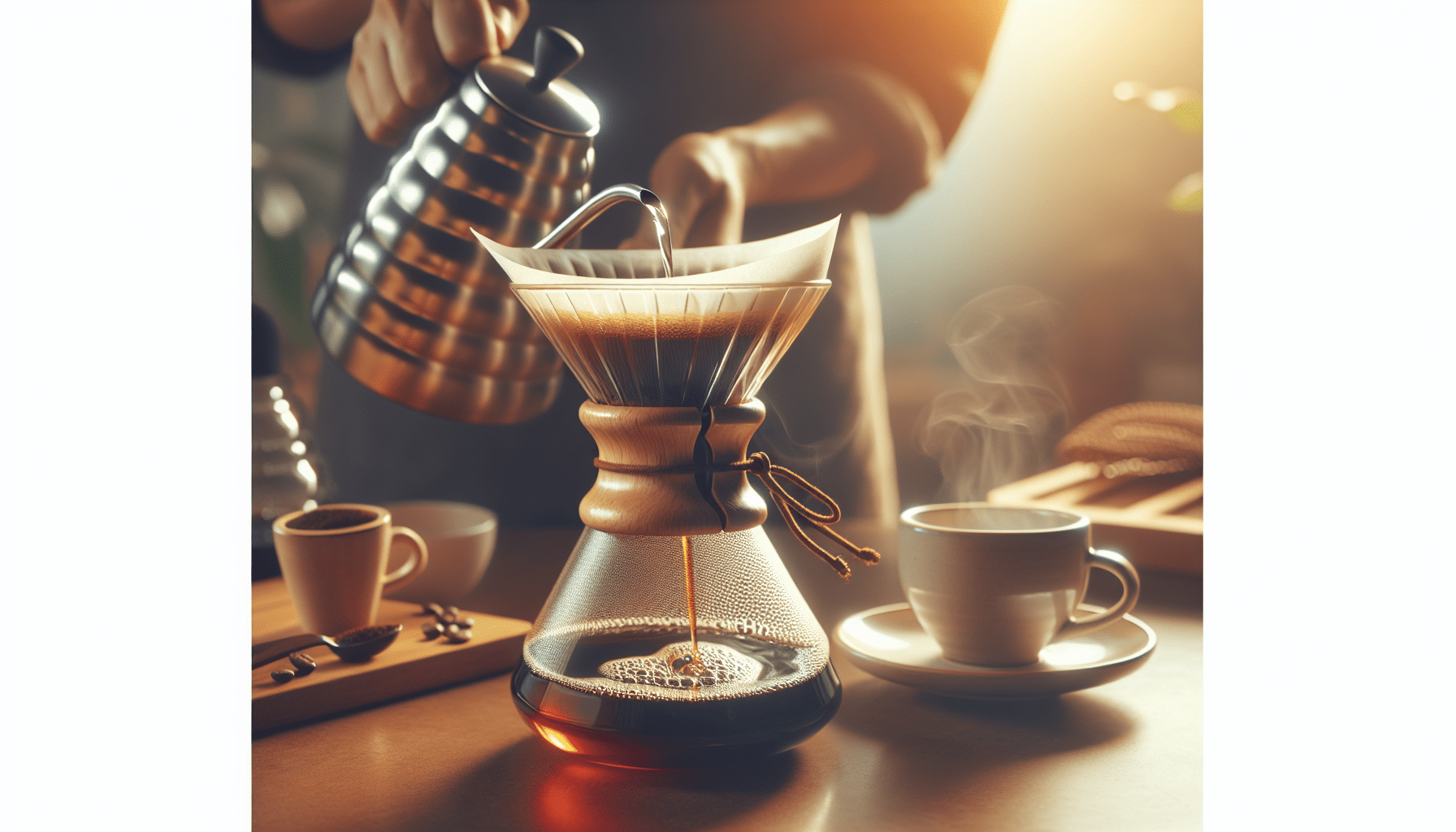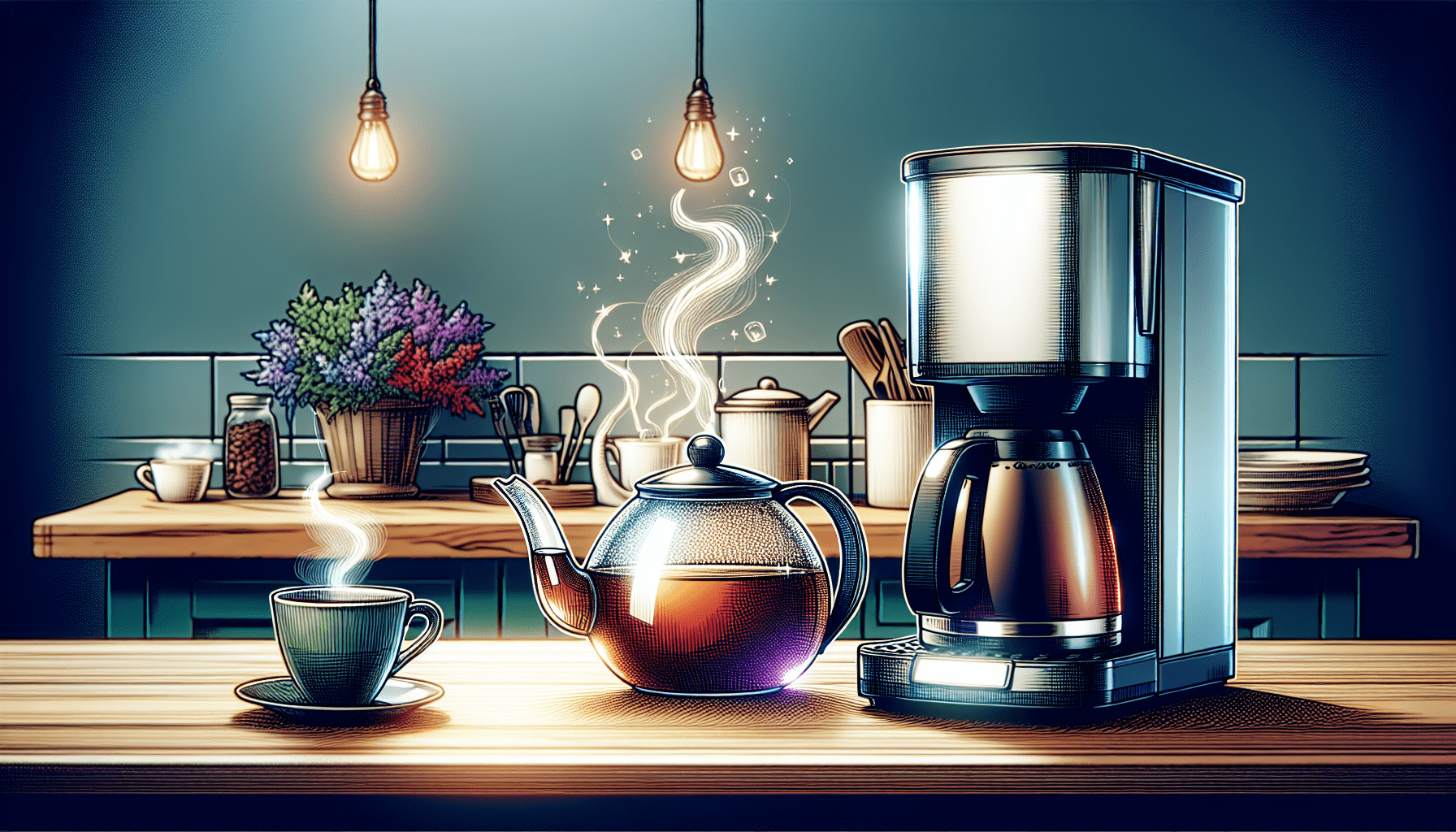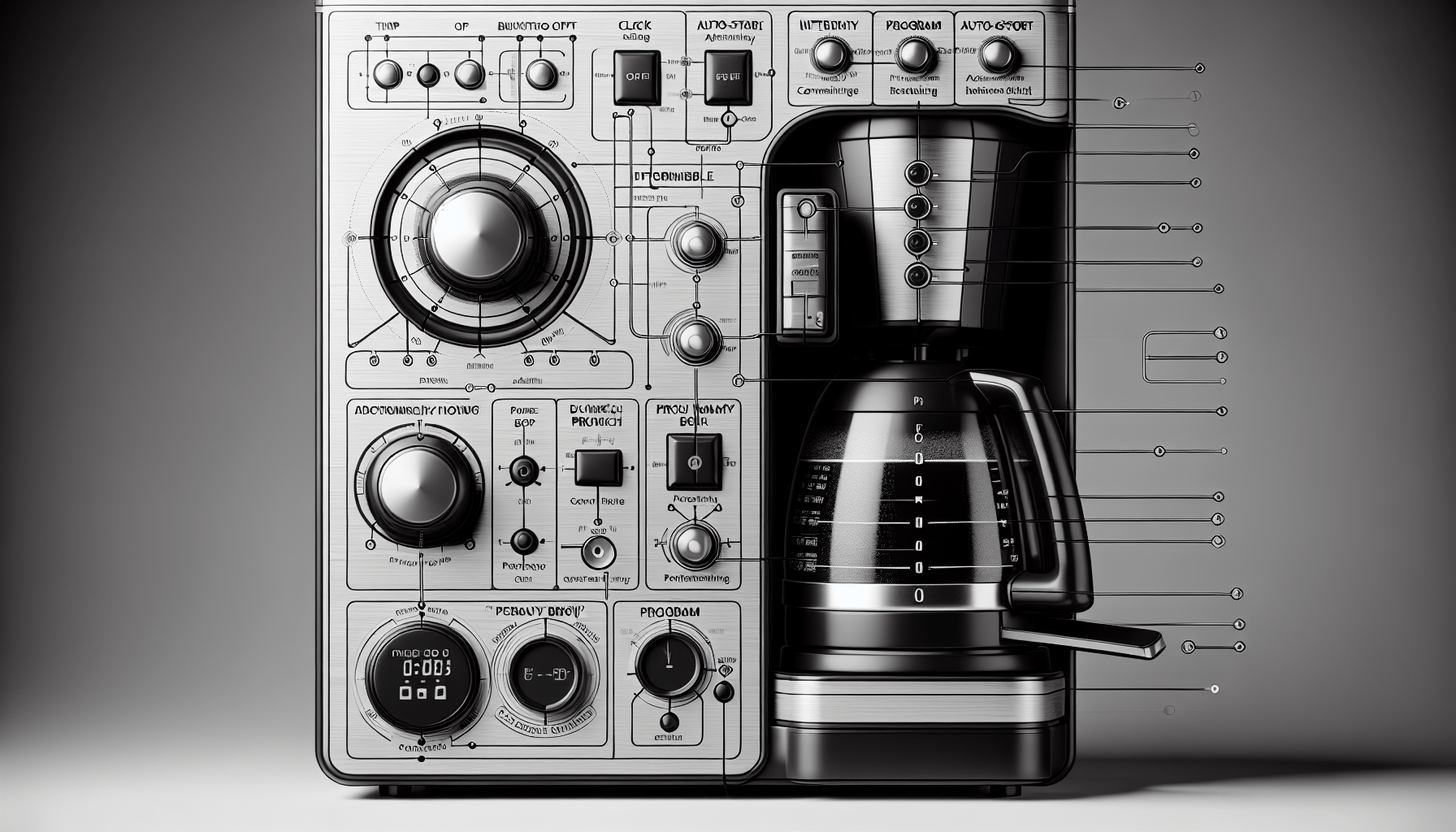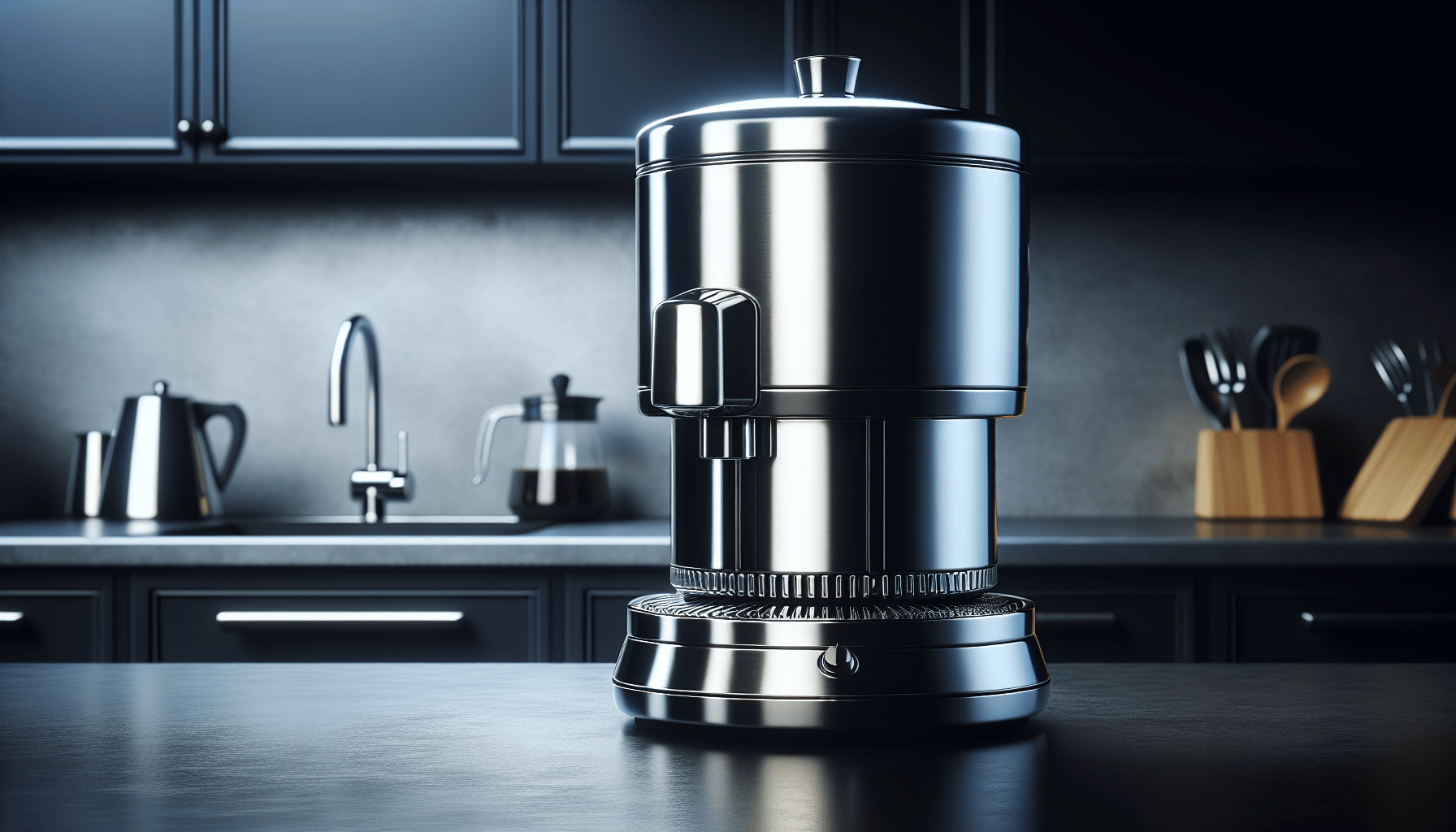Do you love starting your day with a cup of freshly brewed coffee but find yourself confused about which brewing method to choose? Look no further! In this article, we’ll explore the key differences between two popular brewing methods: the drip coffee maker and the pour-over. Whether you prefer the convenience of a machine or the artistry of a manual technique, we’ll help you understand the unique characteristics of each method so you can make a more informed decision about your daily coffee ritual. So grab your favorite mug and let’s embark on a journey to discover the perfect brewing method for you!
Basic Definition
Drip Coffee Maker
A drip coffee maker is a common household appliance used for brewing coffee. It typically consists of a water reservoir, a heating element, a filter basket, and a carafe to collect the brewed coffee. This automated brewing method involves water dripping through the coffee grounds in the filter basket and collecting in the carafe below.
Pour-Over
Pour-over, on the other hand, is a manual brewing method that involves pouring hot water over coffee grounds in a filter. This method requires a pour-over device, such as a dripper or a Chemex, along with a filter and a vessel to catch the brewed coffee. It offers more control over the brewing process as it allows you to adjust variables such as water temperature, pouring technique, and extraction time.
Brewing Method
Drip Coffee Maker
A drip coffee maker follows a straightforward brewing method. Once the water reservoir is filled and the coffee grounds are placed in the filter basket, the machine heats the water to an optimal temperature and slowly drips it over the grounds. The water then passes through the filter, extracting the flavors and oils from the coffee. The brewed coffee flows into the carafe, ready to be served.
Pour-Over
Pour-over brewing involves a more hands-on approach. After placing a filter in the pour-over device and adding coffee grounds, you begin the brewing process by pouring hot water over the grounds in a circular motion. This allows for even extraction and ensures a balanced flavor profile. Each pour is carefully timed and controlled, allowing you to customize the strength and flavor of your coffee.
Design
Drip Coffee Maker
Drip coffee makers come in various designs, ranging from sleek and modern to more traditional styles. They are typically constructed with a sturdy base, a water reservoir, and a carafe. Some models may also include additional features such as a programmable timer, a built-in grinder, or a thermal carafe to keep the coffee hot for longer periods.
Pour-Over
Pour-over devices are available in different materials and designs, including ceramic, glass, and stainless steel. Their elegant and minimalist designs make them a popular choice for coffee enthusiasts. Some pour-over devices, such as the Chemex, feature a unique hourglass shape that not only adds aesthetic appeal but also ensures optimal brewing by controlling the flow of water through the grounds.
Control over Variables
Drip Coffee Maker
While drip coffee makers offer convenience, they provide less control over variables compared to pour-over methods. The machine controls the water temperature, flow rate, and extraction time, which may limit the ability to customize the brewing process. However, some modern drip coffee makers offer adjustable settings for strength and brewing temperature, providing a certain level of control.
Pour-Over
Pour-over brewing gives you full control over variables, allowing you to fine-tune your coffee to your preference. You can adjust the water temperature, pouring speed, and the size of the grind to achieve the desired flavor and strength. This hands-on approach allows for experimentation and creativity, making pour-over a favored brewing method among coffee enthusiasts.
Brew Time
Drip Coffee Maker
One of the advantages of using a drip coffee maker is its relatively short brew time. Once you have filled the water reservoir and added the coffee grounds, the machine starts brewing, and the process is usually completed within a few minutes. This quick brewing time is especially beneficial when making coffee for multiple people or when in a hurry.
Pour-Over
Pour-over brewing takes longer than using a drip coffee maker. The process involves multiple pours of water over the coffee grounds, allowing each pour to fully extract the flavors before proceeding to the next one. The total brew time for pour-over can range from three to five minutes, depending on factors such as the brewing technique, coffee grind size, and desired strength.
Taste and Flavor
Drip Coffee Maker
Drip coffee makers produce a consistent and familiar taste, resulting in a balanced and smooth cup of coffee. The controlled water temperature and even extraction through the filter contribute to a clean flavor profile. However, the flavor can sometimes lack the depth and complexity achieved through other brewing methods.
Pour-Over
Pour-over brewing often leads to a more nuanced and flavorful cup of coffee. The manual control over variables allows you to optimize the brewing process and explore the coffee’s unique characteristics. The slow, precise pouring technique extracts a rich and aromatic brew, highlighting the subtle notes and flavors of different coffee varieties.
Cost
Drip Coffee Maker
Drip coffee makers are available at various price points, making them an affordable option for most coffee lovers. Basic models can be purchased for around $20, while more advanced and feature-rich machines may range from $50 to $200. Consumables like coffee filters are also inexpensive and widely available.
Pour-Over
The cost of pour-over brewing can vary depending on the equipment chosen. Pour-over devices can range from $10 for a simple plastic dripper to around $50 for a high-end, hand-blown glass dripper. Additionally, the use of paper filters or reusable metal filters contributes to ongoing costs. However, compared to the initial investment in a drip coffee maker, pour-over brewing can be a more cost-effective option in the long run.
Ease of Use
Drip Coffee Maker
Drip coffee makers are designed for convenience and ease of use. Once the machine is set up, all you need to do is add water and coffee grounds, press a button, and wait for the brewing process to complete. This makes it a practical choice for those who prefer a hassle-free approach to making coffee.
Pour-Over
Pour-over brewing requires more involvement and attention to detail. It demands a certain level of skill to pour the hot water evenly over the coffee grounds, maintaining the proper extraction rate. While it may take some practice to perfect the pouring technique, many coffee enthusiasts enjoy the process and find it meditative. The hands-on nature of pour-over brewing can be both enjoyable and rewarding for those who appreciate the art of making coffee.
Portability
Drip Coffee Maker
Drip coffee makers are generally less portable due to their larger size and reliance on electricity. They are primarily designed for home or office use, making them less suitable for on-the-go coffee brewing. However, some compact and travel-friendly drip coffee makers are available on the market for those who still desire the convenience of automated brewing while traveling.
Pour-Over
Pour-over brewing is inherently portable, making it a popular choice for coffee lovers on the move. Pour-over devices are typically lightweight and compact, allowing them to be easily packed into a travel bag. Additionally, pour-over brewing does not require electricity, making it versatile for use in various environments, such as camping trips or hotel rooms.
Maintenance and Cleaning
Drip Coffee Maker
Maintaining and cleaning a drip coffee maker is relatively simple. Regular cleaning involves emptying and rinsing the carafe and filter basket, along with occasional descaling to remove mineral deposits from the machine. Replaceable parts, such as filters, may need to be periodically changed. Manufacturer instructions should be followed for proper maintenance to ensure consistent performance and longevity.
Pour-Over
Pour-over devices are typically easy to clean, as they consist of fewer components than drip coffee makers. After use, you can discard the filter and rinse the device with water. Some pour-over devices are dishwasher safe, while others require handwashing. Regular cleaning ensures the removal of coffee residue and helps maintain the device’s performance and longevity.
In conclusion, both drip coffee makers and pour-over methods have their own advantages and appeal. Drip coffee makers offer convenience, speed, and consistency, making them a popular choice for daily brewing. On the other hand, pour-over brewing provides greater control over variables, resulting in a more customized and flavorful cup of coffee. The choice between the two ultimately depends on personal preferences, priorities, and the level of involvement one seeks in the coffee brewing process.




